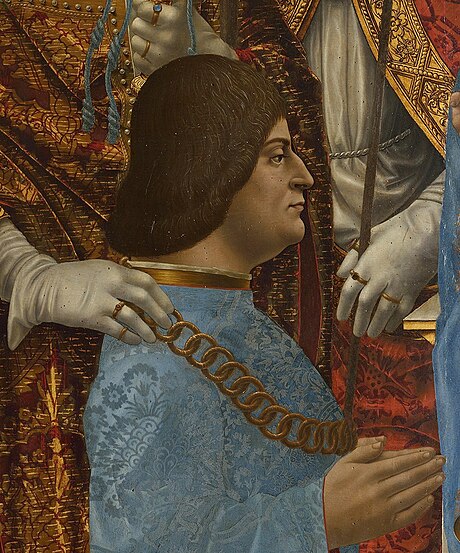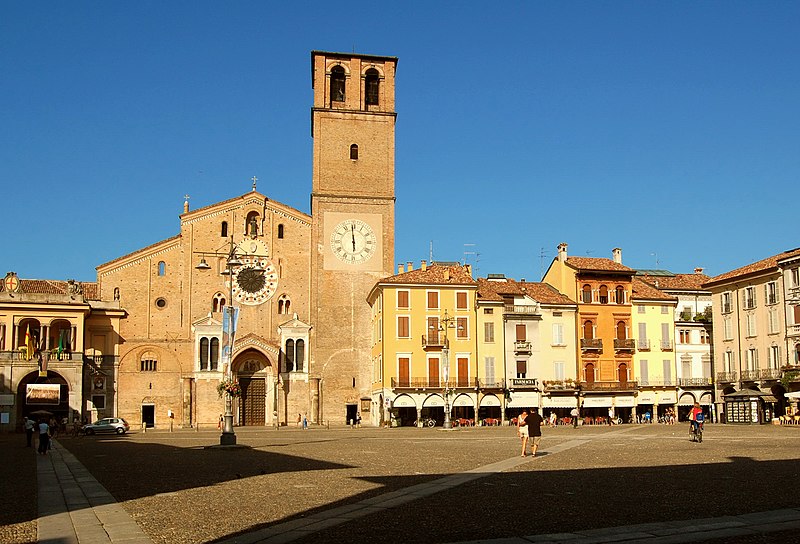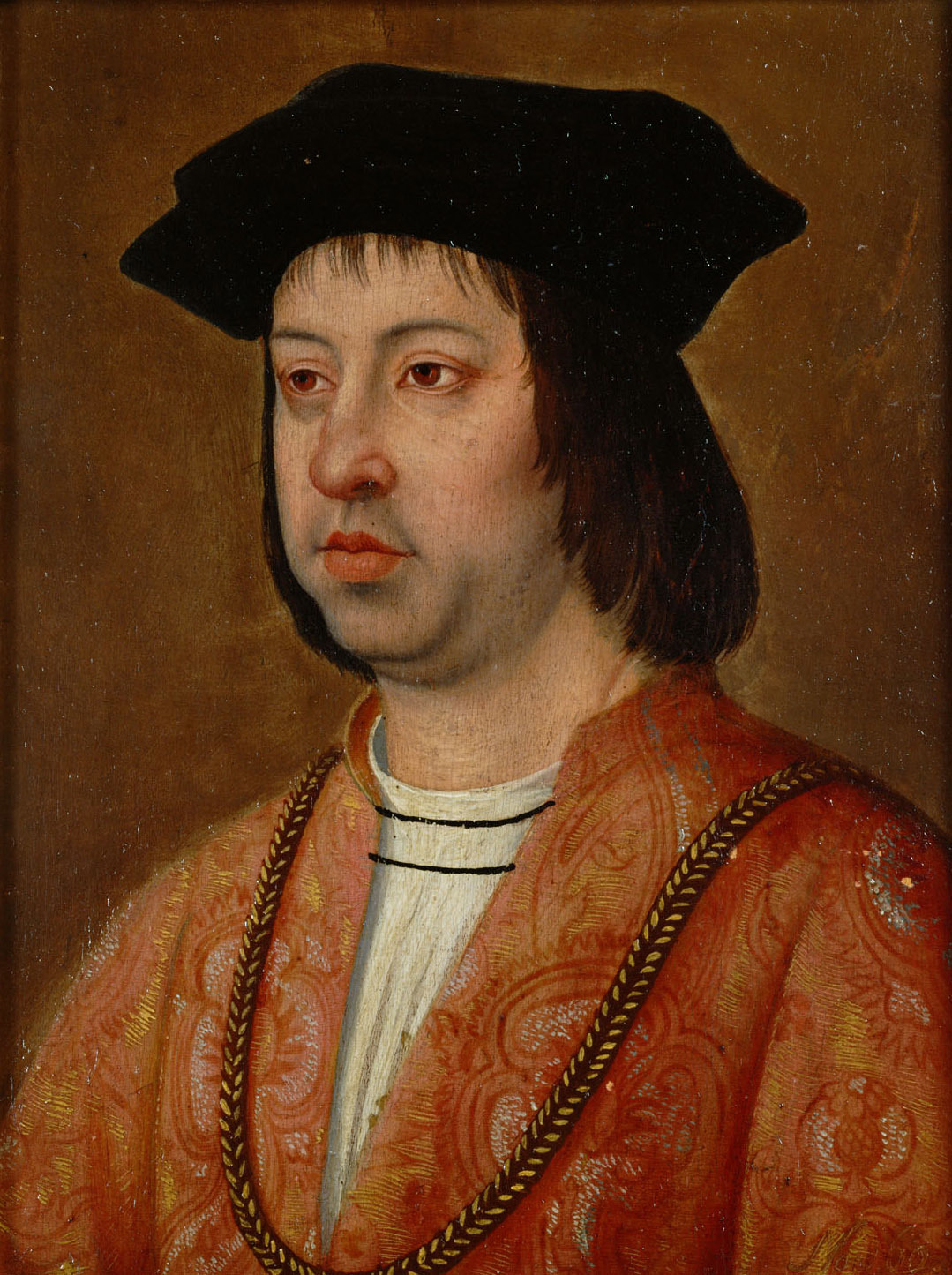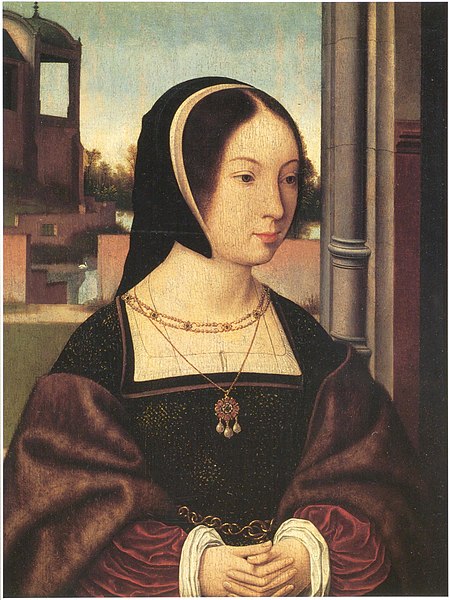 |
| Anne of Brittany |
The Search for an Heir
In 1505 when
Louis was once again very ill and, in the absence of his wife in Brittany on
ducal business, he bowed to pressure from Cardinal d’Amboise. Louis cancelled
Claude’s engagement to Charles[i], in favour of his heir
François. He named Anne as Regent for the ten year old François. Anne was
furious with Louis’s action as it threatened the autonomy of Brittany; she remained
in Brittany for five months to make clear her displeasure.
Louis
recovered and spent the late summer riding and hunting in the environs of
Tours. In May 1506, following a convocation of the Estates General in Tours,
the betrothal between Claude and François was confirmed. After the engagement
to Claude, Louis increased François’ pension to 20,000 livres per annum[ii]. Two years later François
moved from Amboise to live at court.
Philip the
Fair was furious at Louis’ perfidy but he died at the age of twenty-eight in
September 1506 and Maximilian named his daughter Margaret as regent for his six year old
grandson Charles[iii].
Along with
five miscarriages Anne gave birth to a stillborn son on 21st January
1503. Anne detested Louise of Savoy who was ambitious for her own son and
gloated over Anne’s stillborn children;
‘Anne, Queen of France…..had
a son, but he could not retard the exaltation of my Caesar [François] because
he was lacking in life.’[iv]
Eleven years
after Claude’s birth, on 25th October 1510, Princess Renée was born; Louis was present in the
birthing chamber, having rushed to Lyons. Renée was named after St René of
Angers; Louis and Anne had made several pilgrimages to Angers pray for an heir.
Michelle de Saubonne, Madame de Soubise, was named as Renée’s governess.
In March
1511 Anne became sick with a fever and her life was despaired of; but she
recovered after having been given the last rites. Anne suffered the loss of another stillborn son in January
1512. After this Louis gave up hopes of an heir and made François the Dauphin. He
was admitted to the king’s council and made captain of 100 lances.
Louis at Home and Abroad
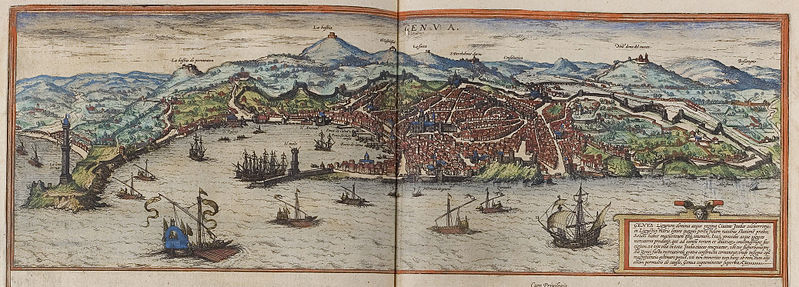 |
| Genoa |
Louis
believed that the king should live from his income from his own domains, not rely
on his subjects paying for him. Louis was determined to keep taxation to a
minimum and the taille levied was used for the defence of
France. Louis kept to a minimum the pensions he paid and for this he was
mocked. But he was unrepentant, saying;
‘I much prefer to make
dandies laugh at my miserliness than to make the people weep at my
open-handedness.’[v]
Louis used
the sale of financial offices to fund his expenditure. The fight to quell the 1506
revolt in Genoa was funded by an additional surplus
tax that was revoked once the revolt was suppressed. On 4th February
1505 Queen Jeanne died; she’d lived in seclusion in Berri since the divorce.
 |
| Marguerite d'Angouleme |
In 1509, in
alliance with Pope Julius II[vi] and Maximilian, Louis in his role as Duke of Milan,
took his army to fight the Venetian Republic. Both Anne and de la Trémoille opposed the war; Anne
because she was a pacifist and Trémoille because he was suspicious of
Maximilian’s motives.
Anne wrote
to Louis urging him to come home which he did in the August, although only
forty-seven, the campaign had tired him. Anne met him at Grenoble. En route to
Paris Louis was stricken with gout at St Pierre le Moûtier and he retired to Blois where he
spent some time with Claude.
In December
François’ sister, Marguerite, was married to Charles d’Alençon, a bosom friend of her brother’s.
Louis and Anne were both present at the marriage and at the dinner and at the
tournament that followed François displayed his jousting skills.
Religious Divide
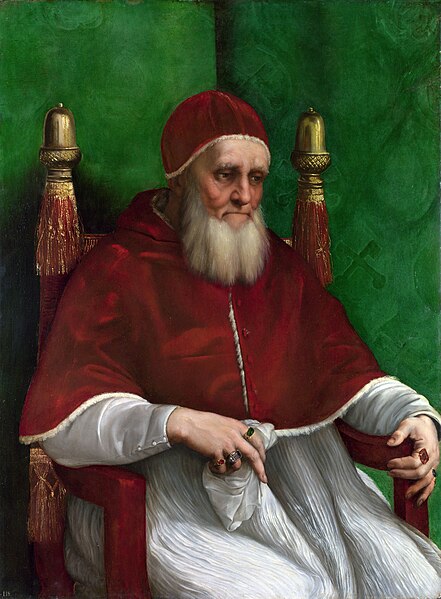 |
| Julius II |
Pope Julius
was a quarrelsome man and his and Louis’ interests soon diverged. Julius then
joined forces with Maximilian who was still enraged at Louis’ games over
Claude’s marriage and Henry VIII on Louis’ northern and western
borders distracted Louis’ attention from Milan. It did not help that Anne
supported Julius over her husband.
Anne was
guided in religious matters by her confessor Yves de Maheuc and tried to make
peace between the Vicar of Rome and Louis. Louis was not pleased, claiming
that;
‘The Holy Father aims at
royal honours; St Peter had not the leisure to look after the affairs of
Claudius or Nero, which in truth do not belong to him at all.’[vii]
Anne refused
to let the churchmen from Brittany to attend the Council of Pisa[viii], preferring to adhere to the Council of the Lateran convened by Julius. Louis and Anne
were not in accord and Anne now redoubled her pious activities, lavishing alms
on the Filles Pénitentes de Paris and the Minimes of Nigeon and inviting them
to pray for Louis. Anne had the Jews expelled from Brittany although she gave
pensions to those prepared to convert. In March 1512 Anne retired to bed with a
fever and did not leave her chamber until May.
Louis was
infuriated by Julius’ refusal to raise any French churchmen to the College of
Cardinals and he was not pleased when Julius made peace with Venice. By the
summer of 1512 Milan was in revolt; Louis had, possibly deliberately, failed to
control his soldiers and the Milanese were sickened by the casual cruelty of
the French.
.JPG/549px-Battle_of_Ravenna_(1512).JPG) |
| Battle of Ravenna |
The Swiss,
encouraged by Maximilian, invaded and panicked Louis into retreating towards
Asti. The majority of his army was caught on the wrong side of a river and were
forced to surrender. The remnants of the army entered the Dauphiné in late June, barely two months after a great victory at Ravenna.
On 10th
December, ignoring Anne’s intercession, Julius summonsed Louis to appear at the
Lateran Council. Having finally persuaded her husband to relent in his
animosity to the pope, Anne begged the Cardinal de Luxembourg to intercede with the council and
beg Julius to pardon Louis. Before Julius could receive Louis’ submission he
died on 21st February 1513.
When Leo X was made pope Louis immediately forbad money to be sent to the church in
Rome, causing a serious reduction in church revenue. Leo had supported Maximilian Sforza as a rival to Louis as Duke of Milan and he funded
the Swiss battalions defending Piedmont against further French incursions. The
church now suffered from that support.
Death
 |
| Anne on her deathbed |
On 9th
January 1514 Anne died at Blois; she never recovered her health after the loss
of her last stillborn child in January 1512.
Anne was suffering from gallstones and was in great pain during the last
days of her life. She was thirty-seven years old and had been active almost to
the last with the negotiations with Ferdinand of Aragon, trying to negotiate
the marriage between Renée and his grandson Ferdinand. Anne left custody of her
daughters to Louise of Savoy.
Louis went
into seclusion for several days, telling his courtiers;
‘Go make the vault…..big
enough for us both. Before the year is over I’ll be with her.’[ix]
The mourning
period was extended beyond the traditional forty days and Louis wore black and
insisted that anyone wishing to talk to him should also be dressed in black.
Anne was buried in the Chapel of St Denis and the bill for candles for the two
services in Notre Dame and the chapel amounted to 2,050
livres[x].
On 18th
May Claude married François d’Angoulême at St Germain en Laye. The wedding was subdued as the
court was still in mourning for the queen.
 |
| Mary Tudor |
Another wedding was to follow shortly; on 9th
October, desperate for an heir, Louis married Mary Tudor, sister of Henry VIII. The marriage
had the added advantage of splitting his two enemies; Henry and Maximilian.
Mary was
thirty years Louis’ junior and in her train were two young ladies Anne and Mary Boleyn. Queen Mary wrote to her brother of;
‘How lovingly the King her
husband treats her.’[xi]
Louis was
taken with Mary’s charm, beauty and eagerness to please.
Louis’
lifestyle changed completely after his marriage and this may have exacerbated
his health problems; he was suffering from gout. Louis died just under a year after Anne’s death on 1st
January 1515. Just over two months later, her forty days of seclusion over,
Mary was secretly married to Charles’ Brandon, her brother’s great friend.
François commissioned Jean Juste to create his parents-in-law’s tomb which was
completed in 1531.
Bibliography
Louis XII –
Frederic J Baumgartner, MacMillan Press Ltd 1996
Renaissance
Europe – JR Hale, Wm Collins Sons and Co Ltd 1971
The Rise and
Fall of Renaissance France – RJ Knecht, Fontana Press 1996
Absolute
Monarchs – John Julius Norwich, Random House 2011
A History of
France 1460-1560 – David Potter, MacMillan Press Ltd 1995
Anne of
Brittany – Helen Josephine Sanborn, General Books 2012
The March of
Folly – Barbara W Tuchman, Sphere Books Ltd 1984
Twice
Crowned Queen – Constance de la Warr, Eveliegh Nash 1906 (Reprint 2015)
[ii]
In 2013 the relative: historic standard of
living value of that income or
wealth is £13,980,000.00 economic status
value of that income or wealth is £384,000,000.00 economic power value of that income or wealth is £5,306,000,000.00 www.measuringworth.com
[iii]
Whose mother was in Spain, confined as a mad woman
[iv]
Louis XII - Baumgartner
[v]
The Rise and Fall of Renaissance France - Knecht
[vi]
Known as Papa Terribilis
[vii]
A Twice Crowned Queen – de la Warr
[viii]
An attempt to end the Western Schism
[ix]
Louis XII - Baumgartner
[x]
In 2013 the relative: historic standard of
living value of that income or
wealth is £1,341,000.00 economic status
value of that income or wealth is £37,520,000.00 economic power value of that income or wealth is £506,500,000.00 www.measuringwealth.com
[xi]
Louis XII - Baumgartner


